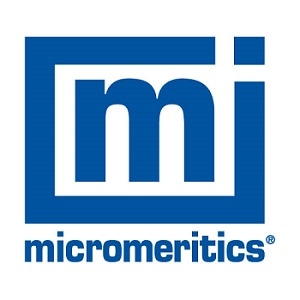Fossil fuel combustion for energy has gradually increased the concentration of greenhouse gases in the Earth's atmosphere. Carbon dioxide is one of the major components of all these emissions. Carbon dioxide sequestration aims the capture and secure storage of existing amounts of CO2 in the atmosphere, as well as of emitted CO2. Since the Kyoto Protocol, concerns over combustion gas emissions have attracted a lot of attention.
There are a considerable number of energy-related approaches aiming to manage the CO2 emissions. They include the use of several carbon-free energy sources such as nuclear, solar, wind, geothermal, and biomass energy. Scientists are looking for new techniques to enhance the energy conversion efficiency. These alternatives however, have only a minimal effect on present fossil fuel demand and usage.
Since energy demands are constantly increasing and conversion to alternative energy sources is not following at a fast enough pace, the worldwide economic dependence on low-cost and high-availability fossil fuels is expected to continue for many years to come. As a result, there is a significant amount of scientific research targeted on developing effective methods to remove and store safely considerable amounts of carbon dioxide from the atmosphere and industrial emission sources.
Storage of Carbon Dioxide
Scientists now believe that sequestration of carbon dioxide in deep geological formations shows much promise as a long-term solution for safely storing CO2 that is captured through cleanup efforts. The basic idea involves compressing captured CO2 into a dense fluid and injecting it into a porous deep geological formation, where the rising CO2 fluid is sealed below a layer of impermeable cap-rock.
The US has several years of experience with natural gas storage. Injecting CO2 for enhanced oil recovery (EOR), Enhanced Coal Bed Methane recovery (ECBM), and the injection of acid gases into saline geological structures have therefore offered an incentive to pursue this promising approach. The U.S. Department of Energy, led by the NETL and Regional Carbon Sequestration Partnerships (RCSP) in partnership with industry and academia, is pursuing a CO2 Sequestration Research, Development and Demonstration Program. Field tests are presently taking place throughout the U.S. and Canada. Storage areas under study include gas reservoirs and depleted oil, unminable coal seams, and deep saline formations. Many of these formations have stored carbon dioxide, other gases, and fluids for millions of years and are expected to be able to store many years of human-generated CO2.
Furthermore, in the last fifteen years, three large-scale CO2 storage projects in Norway (1996), Canada (2000), and Algeria (2004), have begun operations and reported no safety- or health-related incidents.
Even though these formations can store human-generated CO2, it has been determined that annually over a billion metric tons must be sequestered in order to make a considerable reduction. Many factors have to be analyzed before determining the full-scale implementation of appropriate sequestration sites. However, factors such as proper engineering design and monitoring, hydrologic-geochemical-geomechanical processes that govern the long-term storage of carbon dioxide in the subsurface still need to be fully understood.
Characterization of Geological Materials
Research scientists need methods to characterize geological materials that help determining the value of the formation as a reservoir. Since 1962, Micromeritics has supplied analytical tools that calculate the porosity and surface area, critical measurements required for the study of prospective CO2 sequestration sites.
Surface area and mercury porosimetry instruments have been utilized as necessary tools to characterize the sealing and fluid-transport characteristics of fine-grained sedimentary rocks under the temperature and pressure conditions of geological carbon dioxide.
Pore volume measurements help determining the capacity of a formation. Pore size is a significant variable in determining the rate at which CO2 flows through the formation during filling.
The Micromeritics Instruments used for Geological Material Characterization
The various instruments used for material characterization from Micromeritics include the following:
- Micromeritics AutoPore mercury porosimeter has been utilized to determine the sealing capacity and pore-throat aperture size distribution on reservoir core samples.
- Fluid transport experiments can be complemented by the combination of B.E.T. specific surface area data collected on Micromeritics ASAP 2020 Accelerated Surface and Porosimetry System and mercury porosimetry data. These experiments enable considerable changes in the transport characteristics and sealing efficiency of the samples.
- The Micromeritics ASAP 2020 is also an optimum tool for measuring both mesopore and micropore distributions in coal, hence offering valuable information for ECBM studies.
- Micromeritics ASAP 2050 Xtended Pressure Sorption Analyzer and Micromeritics HPVA II High-Pressure Adsorption Analyzer are ideal instruments for assessing the storage capacity of CO2 adsorbents at high pressures.
- The Micromeritics ASAP 2050 is a high-resolution instrument that offers capacity as a function of storage pressure for a vacuum to 10 bar. The HPVA extends the characterization to 100 or 200 bar.
- Both the Micromeritics ASAP 2050 and Micromeritics HPVA allow researchers to analyze materials under real-world conditions. International governments, with the aid of the scientific community, must find a way to eliminate the excess of CO2 in our atmosphere generated from the burning of fossil fuel.
Summary
Initial data suggest the sequestration of CO2 in geologic formations presents a promising solution against the increasing concentration of greenhouse gases in the Earth's atmosphere. The goal of storing massive amounts of CO2 relies partially on a number of physical quantities that need to be characterised on geological formations. Micromeritics expertise and its innovative materials characterization instrumentation have already been and will continue to be, fundamental in providing important measurement tools required for carbon dioxide sequestration projects.

This information has been sourced, reviewed and adapted from materials provided by Micromeritics Instrument Corporation.
For more information on this source, please visit Micromeritics Instrument Corporation.